Lawrence K. Wang, Yung-Tse Hung, Howard H. Lo, Constantine Yapijakis084937233X, 9780849372339
Table of contents :
Waste Treatment in the Process Industries……Page 2
Preface……Page 4
Contents……Page 6
Contributors……Page 8
Table of Contents……Page 0
1.2 DEFINITIONS OF INDUSTRIAL ECOLOGY……Page 9
1.3 GOAL, ROLE, AND OBJECTIVES……Page 10
1.4 APPROACH AND APPLICATIONS……Page 11
1.5 TASKS, STEPS, AND FRAMEWORK FOR IMPLEMENTATION……Page 12
1.6 QUALIFICATIONS OF INDUSTRIAL ECOLOGISTS……Page 13
1.8 SUSTAINABLE AGRICULTURE, INDUSTRY, AND ENVIRONMENT……Page 14
1.9.3 Zero Discharge……Page 15
1.10.1 New Galvanizing Steel Technology Used at Delot Process SA Steel Factory, Paris, France……Page 16
1.10.4 Recovery and Recycling of Toxic Chrome at Germanakos SA Tannery Near Athens, Greece……Page 17
1.10.6 Recycling of Hazardous Wastes as Waste-Derived Fuels at Southdown, Inc., Houston, Texas, United States……Page 18
1.10.7 Utilization and Reduction of Carbon Dioxide Emissions at Industrial Plants……Page 19
REFERENCES……Page 20
2.1 INTRODUCTION……Page 22
2.2 GENERAL CONSIDERATIONS……Page 23
2.3 MICROBIAL TESTS……Page 25
2.3.2 Tests Based on Enzyme Activity……Page 26
2.3.3 Tests Based on Growth Inhibition……Page 28
2.3.6 Genotoxicity……Page 29
2.4.1 Tests with Crustaceans……Page 30
2.4.3 Tests with Cnidaria……Page 32
2.4.5 Tests with Invertebrates……Page 33
2.5 ALGAE TESTS……Page 34
2.6 PLANT TESTS……Page 35
2.7 COMMERCIAL STANDARD BIOASSAYS: TOXKIT TESTS……Page 37
2.8.1 Application of Single Species Bioassays……Page 38
2.8.2 Application of the Battery of Toxicity Tests……Page 39
2.9 APPLICATION OF THE BIOASSAYS FOR REGULATORY REQUIREMENTS OF EFFLUENTS……Page 45
2.9.1 Control of the Toxicity of Industrial Discharges……Page 48
2.9.3 USA……Page 49
2.9.7 Japan……Page 51
2.9.11 The Netherlands……Page 52
2.9.14 Norway……Page 54
2.9.18 Czech Republic……Page 55
2.9.21 Russia……Page 56
REFERENCES……Page 58
3.1.1 General Introduction and Objectives……Page 69
3.1.2 Hazardous Waste Classification……Page 71
3.2 MANAGEMENT OF ENVIRONMENTAL HAZARDS AT INDUSTRIAL SITES……Page 72
3.2.2 Explosion and Fire Hazards……Page 73
3.2.6 Safety Hazards……Page 74
3.2.9 Cold Exposure Hazards……Page 75
3.3.1 Airborne Contaminants……Page 76
Nitrogen Oxides……Page 77
Asbestos……Page 78
Lead……Page 79
Chlorofluorocarbon (CFC) and Freon……Page 80
Dioxins……Page 81
Cadmium……Page 82
Fluoride……Page 83
Radionuclides……Page 84
3.4.3 A Case History of Water Pollution by PCB Release……Page 85
3.5.2 Disposal of a Small Quantity of Hazardous Solid Wastes……Page 86
Infectious and Hazardous Medical Wastes……Page 88
Petroleum Contaminated Soil……Page 89
PCBs……Page 90
3.5.4 Disposal of Hazardous and Infectious Wastes……Page 91
Vinyl Floor Tiles and Vinyl Sheet Flooring……Page 92
Stoves, Furnaces, and Door Gaskets……Page 93
3.6.3 Identification of Asbestos……Page 94
3.6.4 Operation and Maintenance (O&M) Program……Page 95
3.6.5 O&M Training Program……Page 96
3.6.6 General Guidelines for Handling Asbestos-Containing Materials……Page 97
Regulations……Page 98
3.6.9 Emissions Control, Waste Transportation, and Waste Disposal……Page 99
3.7.1 General Approach……Page 100
3.7.2 Measuring Instruments……Page 101
An Example in Massachusetts……Page 102
3.8.2 Hazardous Waste and Waste Oil Documentation Using a Manifest……Page 104
3.8.4 Shipping Hazardous Waste……Page 105
3.8.6 Standards for Waste Containers and Tanks……Page 106
3.8.9 Criteria for Accumulation of Waste Oil in Underground Storage Tanks……Page 107
3.9.1 Requirements for Underground Storage Tanks……Page 108
Five-Year Inspections……Page 109
Leak Testing for Pipelines……Page 110
3.10.1 Emergency Equipment……Page 111
3.10.5 Emergency Response……Page 112
3.11.3 Self-Transport Option……Page 113
3.12.1 Registration……Page 114
3.14.1 Requirements……Page 116
3.14.2 Hazardous Waste Identification……Page 117
3.14.3 A Case History for Disposal of Photographic Wastes by a Large Quantity Generator (LQG)……Page 118
Environmental Situations……Page 119
Chemical Recovery Cartridge Metallic Replacement Method……Page 121
Electrolytic Silver Recovery Method……Page 122
Conventional Ion-Exchange Method……Page 123
Electrolytic Cell Plus In Situ Ion-Exchange Method……Page 124
Sulfide Precipitation Method……Page 125
Process Comparison and Selection……Page 126
Option of Transporting Wastes to a Licenced Facility……Page 128
Option of Using a Licenced Transporter and Facility……Page 129
3.15.2 Cement Kiln Energy Recovery System……Page 130
3.15.3 Cement Kiln Monitoring and Control……Page 131
3.15.5 Health Effects and Risks……Page 132
3.15.7 Southdown Experience in Product Quality Monitoring……Page 133
REFERENCES……Page 134
4.1 BIOTREATABILITY OF INDUSTRIAL HAZARDOUS WASTES……Page 138
Application of Biotechnology in the Treatment of Hazardous Substances from the CERCLA Priority List……Page 139
Hazardous Wastes of Other Chemical Industries……Page 150
Cases When Biotechnology is Most Applicable for the Treatment of Hazardous Wastes……Page 151
Roles of Biotechnology in Hazardous Waste Management……Page 153
Whole-Cell Biosensors……Page 154
Detection of Bacterial DNA Sequences by Oligonucleotide Probe or Array……Page 155
Conventional Composting of Organic Wastes……Page 156
Application of Biotechnology in/on the Sites of Postaccidental Wastes……Page 157
Treatment in Aerobic Reactors……Page 158
Biodegradable Hazardous Gases……Page 159
Biotreatment by Facultative Anaerobic Microorganisms……Page 160
4.2.5 Combined Anaerobic/Aerobic Biotreatment of Wastes……Page 161
Biosorption……Page 162
Optimal Temperature……Page 163
Increase of Bioavailability of Contaminants……Page 164
Enhancement of Biodegradation by Biologically Produced Oxygen Radicals……Page 165
Application of Acclimated Microorganisms……Page 166
Construction of Genetically Engineered Microorganisms……Page 167
REFERENCES……Page 168
5.2 CATEGORIZATION OF THE PHARMACEUTICAL INDUSTRY……Page 172
5.3 PROCESS DESCRIPTION AND WASTE CHARACTERISTICS……Page 173
5.3.2 Synthetic Organic Chemical Plants……Page 174
5.3.3 Fermentation/Synthetic Organic Chemical Plants……Page 177
5.3.4 Biological Production Plants……Page 178
5.3.5 Drug Mixing, Formulation, and Preparation Plants……Page 179
5.4 SIGNIFICANT PARAMETERS IN PHARMACEUTICAL WASTEWATER TREATMENT……Page 180
5.5 WASTE RECOVERY AND CONTROL……Page 181
5.6 TREATMENT OF PHARMACEUTICAL WASTEWATER……Page 182
5.6.1 Physicochemical Treatment……Page 183
Air Stripping……Page 184
Activated Sludge Process……Page 185
Powdered Activated Carbon Activated Sludge Process……Page 188
Extended Aeration……Page 189
Trickling Filter……Page 190
Anaerobic Filter……Page 192
Two-Stage Biological System……Page 194
Anaerobic Hybrid Reactor……Page 199
Combined Waste Treatment with Other Industrial Waste……Page 200
Treatment of Fermentation/Synthetic Organic Bulk Pharmaceutical Waste……Page 201
Treatment of Fermentation, Organic Synthesis Processing, and Chemical Finishing and Packaging Type Bulk Pharmaceutical Waste……Page 202
5.8 ENVIRONMENTAL PROTECTION AGENCY EFFLUENT LIMITATIONS FOR THE PHARMACEUTICAL INDUSTRY……Page 204
5.9 SUMMARY AND CONCLUSIONS……Page 205
Solution……Page 208
Example 2……Page 209
Example 3……Page 210
Solution……Page 211
Solution……Page 212
Solution……Page 214
Solution……Page 215
Example 9……Page 218
Solution……Page 219
Solution……Page 222
Example 13……Page 223
Solution……Page 225
Solution……Page 227
Solution……Page 228
Solution……Page 230
5.11 DISCUSSION TOPICS AND PROBLEMS……Page 232
NOMENCLATURE……Page 234
REFERENCES……Page 235
6.1.1 Oil Drilling……Page 239
6.1.2 Recovering Petroleum……Page 240
6.2 OIL REFINING……Page 241
6.2.1 Crude Oil and Product Storage……Page 242
6.2.4 Crude Oil Fractionation……Page 244
Three-Stage Crude Distillation……Page 246
6.2.6 Catalytic Cracking……Page 248
6.2.9 Alkylation……Page 250
6.2.12 Solvent Refining……Page 252
6.2.13 Hydrotreating……Page 253
6.2.16 Drying and Sweetening……Page 255
6.2.18 Blending and Packaging……Page 256
6.2.20 Utility Functions……Page 257
6.3.1 Oil Field Wastes……Page 258
6.3.2 Refinery Wastewater……Page 260
6.3.3 Refinery Solid and Hazardous Wastes……Page 265
6.4 ENVIRONMENTAL REGULATIONS……Page 268
6.4.2 Pretreatment Requirements……Page 272
6.4.3 Water Quality Based Limitations……Page 274
6.5.1 Produced Water Treatment and Disposal……Page 275
Surface Discharge……Page 276
Subsurface Discharge……Page 277
6.5.2 Drilling Fluids Treatment and Disposal……Page 278
Microorganism Processing……Page 279
Good Housekeeping……Page 280
6.6.2 Segregation and Pretreatment……Page 281
Sour Water Stripping……Page 282
Spent Caustics Treatment……Page 283
6.6.3 End-of-Pipe Treatment……Page 284
Parallel and Corrugated Plate Separators……Page 285
Dissolved Air Flotation……Page 286
Equalization……Page 288
Activated Sludge……Page 289
Trickling Filter……Page 291
Filtration……Page 292
Activated Carbon Adsorption……Page 294
Control of Whole Effluent Toxicity……Page 296
Cyanide Control……Page 298
Heavy Metals Removal……Page 300
Primary Sludge Listing……Page 301
6.6.6 Treatment for Recycle/Reuse and Zero Discharge……Page 303
6.7 POLLUTION PREVENTION/HAZARDOUS WASTE MINIMIZATION……Page 305
6.7.2 The 130,000 bpd Refinery Example……Page 306
REFERENCES……Page 307
7.1.1 Classification of Surfactants……Page 311
Amphoteric Surfactants……Page 312
7.2 IMPACTS OF DETERGENT PRODUCTION AND USE……Page 313
7.2.3 Impacts on Biodegradation of Organics……Page 314
7.2.4 Impacts on Wastewater Treatment Processes……Page 315
7.2.5 Impacts on Drinking Water……Page 316
7.3 CURRENT PERSPECTIVE AND FUTURE OUTLOOK……Page 317
7.4.1 Manufacture and Formulation……Page 318
Fat Splitting (B)……Page 320
Flakes and Powders (F)……Page 323
Oleum Sulfonation/Sulfation (I)……Page 329
Spray-Dried Detergents (O)……Page 331
7.4.6 Wastewater Characteristics……Page 337
7.5 U.S. CODE OF FEDERAL REGULATIONS……Page 343
7.6.1 In-Plant Control and Recycle……Page 347
7.6.2 Wastewater Treatment Methods……Page 349
Flotation or Foam Separation……Page 350
Coagulation/Flocculation/Settling/Flotation……Page 351
Ion Exchange and Exclusion……Page 354
7.7 CASE STUDIES OF TREATMENT FACILITIES……Page 356
7.7.1 Colgate–Palmolive Plant……Page 357
7.7.2 Combined Treatment of Industrial and Municipal Wastes……Page 358
7.7.4 Removal of Nonionic Surfactants by Adsorption……Page 359
7.7.6 Removal of Cationic Surfactants……Page 360
7.7.7 Adsorption of Anionic Surfactant by Rubber……Page 361
REFERENCES……Page 362
8.1.1 Textile Processes……Page 367
Replacement and Minimization……Page 368
Separation and Treatment for Disposal or Drain……Page 369
8.1.3 Definitions and Limits……Page 370
8.1.4 IPPC Directive of the European Community……Page 371
General……Page 373
Washing of Raw Wool……Page 374
Antifelt Finishing of Wool……Page 375
General……Page 376
Sizing–Desizing……Page 377
Scouring, Alkaline Pretreatment, and Peroxide Bleach……Page 380
Mercerization……Page 382
Dyeing of Cellulose Fibers……Page 383
Polyester PES……Page 388
8.2.5 Textile Printing Operations……Page 389
8.2.6 Finishing Processes……Page 391
8.3.2 Overview……Page 392
8.3.4 Treatment of Wastewater from Dyeing Processes……Page 393
8.3.5 Wastewater from Printing and Finishing Processes……Page 395
NOMENCLATURE……Page 396
REFERENCES……Page 397
9.1.1 Sources of Raw Materials……Page 403
9.1.2 Characteristics of Phosphate Rock Deposits……Page 404
9.2 INDUSTRIAL OPERATIONS AND WASTEWATERS……Page 406
9.2.1 Categorization in Phosphate Production……Page 407
Phosphorus Consuming……Page 409
Defluorinated Phosphoric Acid……Page 411
Phosphate Fertilizer (A)……Page 415
Mixed and Blend Fertilizer (G)……Page 419
9.2.5 Wastewater Characteristics and Sources……Page 420
9.3 IMPACTS OF PHOSPHATE INDUSTRY POLLUTION……Page 424
9.4.1 Phosphate Fertilizer Manufacture……Page 425
9.4.3 Effluent Standards in Other Countries……Page 427
9.5 WASTEWATER CONTROL AND TREATMENT……Page 428
Cooling Water……Page 429
Phosphate Manufacturing……Page 430
Phosphate Manufacturing……Page 432
Phosphate Fertilizer Production……Page 433
Phosphate and Fluoride Removal……Page 435
Phosphoric Acid Production……Page 437
9.6.1 Pebble Phosphate Mining Industry……Page 438
9.6.2 Phosphate Industry Waste Disposal……Page 439
9.6.3 Ammonium Phosphate Fertilizer and Phosphoric Acid Plant……Page 440
9.6.4 Rusaifa Phosphate Mining and Processing Plant……Page 441
9.6.5 Furnace Wastes from Phosphorus Manufacture……Page 442
9.6.6 Phosphate Fertilizer Industry in Eastern Europe……Page 443
9.6.7 Phosphoric Acid and N-P-K Fertilizer Plant……Page 444
9.6.8 Environmentally Balanced Industrial Complexes……Page 445
9.6.9 Fluoride and Phosphorus Removal from a Fertilizer Complex Wastewater……Page 446
9.6.10 Phosphate Recovery by Crystallization Process……Page 449
9.6.12 Improvement and Phosphorus Removal in Wetlands and Sand Filters……Page 450
9.6.15 Emerging Phosphorus Removal Technologies……Page 451
REFERENCES……Page 452
10.1 POLLUTION PROBLEMS OF PULP AND PAPER INDUSTRIES……Page 456
10.3 PULPING PROCESSES……Page 459
Kraft Pulping……Page 462
10.4.1 Kraft Pulping Liquors (Black Liquors)……Page 463
10.4.2 Sulfite Pulping Liquors (Red Liquors)……Page 464
10.5 TOXICITY OF PULPING LIQUORS……Page 465
10.6.1 Compounds Formed during Chlorine Bleaching Process……Page 467
10.8 STRATEGIES FOR POLLUTION CONTROL IN PULP AND PAPER INDUSTRIES……Page 468
Biopulping……Page 470
Biobleaching……Page 471
Improved Control of Bleaching Operations……Page 472
Membrane Separation Techniques……Page 473
Chemical Coagulation and Precipitation……Page 475
Advanced Oxidation Processes……Page 476
Activated Sludge Process……Page 477
Aerated Lagoons (Stabilization) Basins……Page 479
Anaerobic Treatment Processes……Page 484
Sequential Anaerobic-Aerobic Treatment Systems……Page 489
Mycotic Systems for the Removal of Color and AOX……Page 492
10.11.1 Biofilters……Page 493
10.11.3 Biotreatment of Flue Gases……Page 494
REFERENCES……Page 495
11.2 THE PESTICIDE INDUSTRY……Page 501
Nitro Compounds……Page 503
Metallo-Organic Pesticides……Page 507
Liquid Formulation Units……Page 509
Wastewater Sources……Page 511
Wastewater Flows……Page 513
Wastewater Constituents……Page 514
Halomethanes……Page 515
Phenols……Page 516
Phthalates……Page 517
11.3.2 Pesticide Formulating/Packaging……Page 518
Effluent Guidelines for Pesticides……Page 519
Pretreatment Standards for Pesticides……Page 520
Water Quality-Based Limitations……Page 522
11.5 CONTROL AND TREATMENT FOR PESTICIDE MANUFACTURING WASTES……Page 523
11.5.1 Source Control……Page 524
Steam-Stripping……Page 527
Activated Carbon Adsorption……Page 528
Chemical Oxidation……Page 530
Resin Adsorption……Page 532
Hydrolysis……Page 533
Heavy Metals Separation……Page 534
Neutralization……Page 535
Biological Treatment……Page 536
Incineration……Page 538
Deep Well Disposal……Page 540
Other Technologies……Page 541
11.6 CONTROL AND TREATMENT FOR PESTICIDE FORMULATING WASTES……Page 542
REFERENCES……Page 543
12.1.1 General Description……Page 546
Subcategory 1. Tire and Inner Tube Manufacturing……Page 547
Subcategory 3: Solution Crumb Rubber Production……Page 550
Subcategories 5, 6, 7: Small-, Medium-, and Large-Sized General Molding, Extruding, and Fabricating Plants……Page 551
Subcategory 9: Pan, Dry Digestion, and Mechanical Reclaimed Rubber……Page 552
12.1.3 Tire and Inner Tube Manufacturing……Page 553
12.1.4 Emulsion Crumb Rubber Production……Page 564
12.1.7 General Molding, Extruding, and Fabricating Rubber Plants……Page 565
12.1.9 Latex-Dipped, Latex-Extruded, and Latex-Molded Goods……Page 566
12.2.1 Solution Crumb Rubber Production……Page 567
12.3 POLLUTANT REMOVABILITY……Page 568
12.3.1 Emulsion Crumb Rubber Plants……Page 570
12.3.2 Solution Crumb Rubber Plants……Page 571
12.3.4 Tire and Inner Tube Manufacturing……Page 572
12.3.6 Rubber Fabricating Operations……Page 576
12.4.2 Odor Control……Page 577
REFERENCES……Page 580
13.1.2 Power Generation, Waste Production, and Effluent Discharge……Page 582
13.2 INDUSTRY SUBCATEGORY AND SUBDIVISIONS……Page 583
13.2.3 Ash Transport Water Subcategory……Page 584
Boiler Blowdown……Page 585
Boiler Tube Cleaning……Page 586
13.2.8 Wet Flue Gas Cleaning Blowdown Subcategory……Page 587
13.3.1 Characterization……Page 588
Erosion……Page 590
Chemical Treatment……Page 591
Clarification Wastes……Page 599
Boiler Blowdown……Page 603
Chemical Cleaning of Boiler Tubes……Page 606
13.3.7 Coal Pile Runoff……Page 609
Ion Exchange……Page 612
Reverse Osmosis (RO)……Page 613
Filtration……Page 614
Emulsion Breaking……Page 615
13.6.1 Example 1……Page 616
13.6.2 Example 2……Page 617
13.6.5 Example 5……Page 620
REFERENCES……Page 621
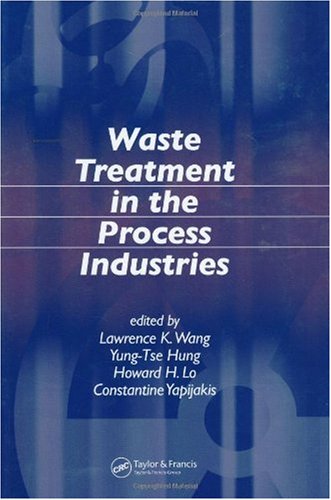

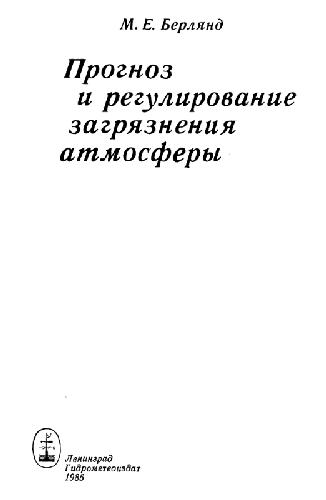

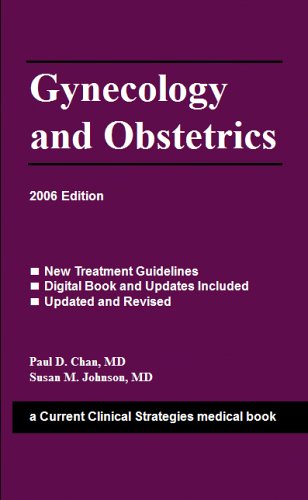
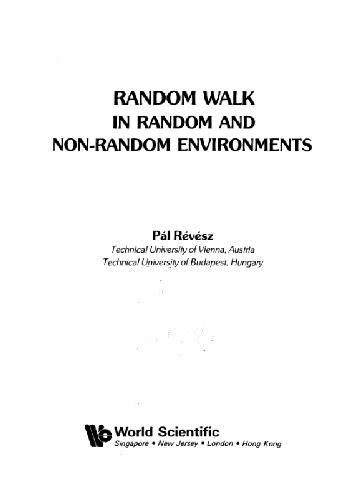
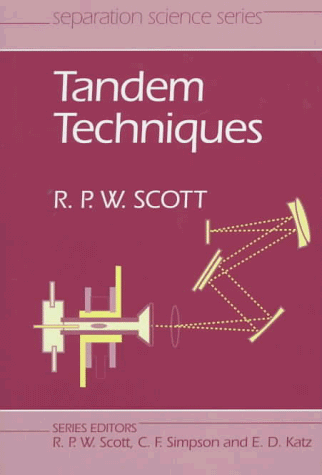
Reviews
There are no reviews yet.